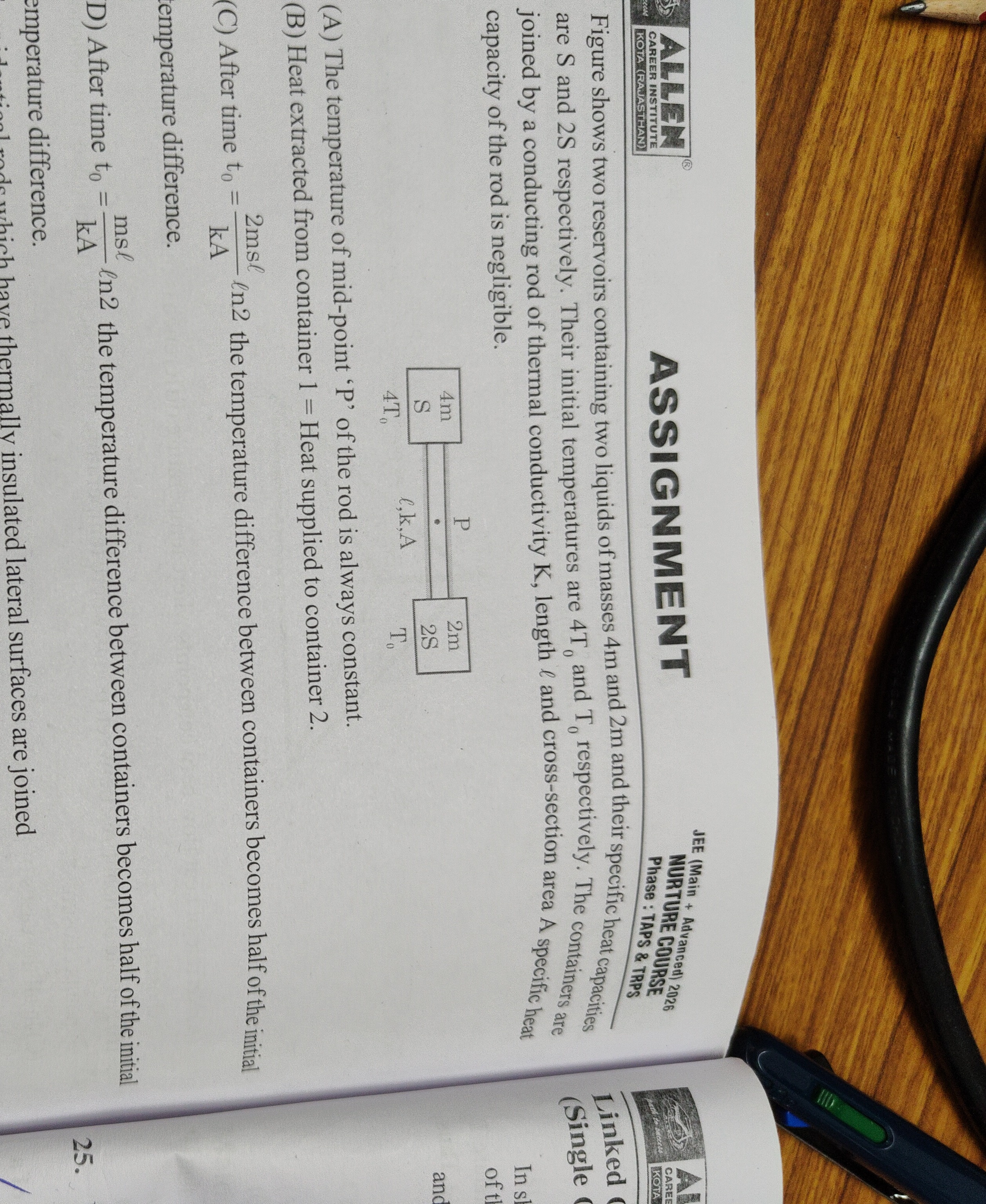Question
Question: Figure shows two reservoirs containing two liquids of masses 4m and 2m and their specific heat capac...
Figure shows two reservoirs containing two liquids of masses 4m and 2m and their specific heat capacities are S and 2S respectively. Their initial temperatures are 4T0 and T0 respectively. The containers are joined by a conducting rod of thermal conductivity K, length ℓ and cross-section area A specific heat capacity of the rod is negligible.
(A) The temperature of mid-point 'P' of the rod is always constant. (B) Heat extracted from container 1 = Heat supplied to container 2. (C) After time t0=KA2msℓℓn2 the temperature difference between containers becomes half of the initial temperature difference. (D) After time t0=KAmsℓℓn2 the temperature difference between containers becomes half of the initial temperature difference.

(A) The temperature of mid-point 'P' of the rod is always constant.
(B) Heat extracted from container 1 = Heat supplied to container 2.
(C) After time t0=KA2msℓℓn2 the temperature difference between containers becomes half of the initial temperature difference.
(D) After time t0=KAmsℓℓn2 the temperature difference between containers becomes half of the initial temperature difference.
A, B, C
Solution
(A) The system consists of two reservoirs connected by a conducting rod. Container 1 has mass 4m and specific heat S, initially at 4T0. Container 2 has mass 2m and specific heat 2S, initially at T0. The rod has negligible heat capacity. The temperature at the midpoint P of the rod is TP(t)=2T1(t)+T2(t), where T1(t) and T2(t) are the temperatures of the containers. Due to conservation of energy, m1S1T1(t)+m2S2T2(t)=constant. Given m1S1=(4m)(S)=4mS and m2S2=(2m)(2S)=4mS, we have m1S1=m2S2. This implies T1(t)+T2(t)=constant. Therefore, TP(t) is constant.
(B) Since the rod has negligible heat capacity and there are no heat losses to the surroundings, the total heat lost by container 1 must be equal to the total heat gained by container 2, according to the principle of conservation of energy.
(C) The rate of change of temperature difference ΔT=T1−T2 is given by dtdΔT=−ℓKA(m1S11+m2S21)ΔT. Substituting the values, m1S11+m2S21=4mS1+4mS1=2mS1. The rate constant is α=ℓKA(2mS1)=2mSℓKA. The time t0 for the temperature difference to halve is given by t0=αln2=2mSℓKAln2=KA2mSℓln2.
